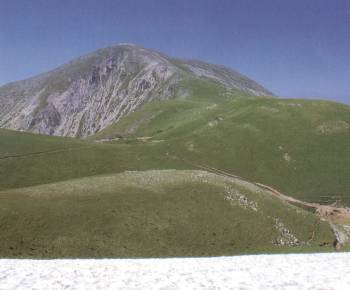This mountainous territory
that curves itself into the dorsal of the Apennines from Corno and from Nera
reaching the Velino valley, the residue of the ancient lake, reclaimed
during the Roman era by means of a bold cut into the Marmore falls, was the
birthplace of saints that knew how to make themselves into true interpreters
of the charismatic Franciscan order: from here, the border of Umbria,
Marche, Abruzzo and Lazio, they spread through the capillaries, incisive
prediction from the observances of Brother Domenic of Leonessa, in
increments of the movement that anticipated the topics of the Catholic
Reformation. From here the Cappuccini missionaries left for the Orient,
headed by a brother of noble origin, Giuseppe of Leonessa, driven by the
glory of the altar. The spiritual activism that gave soul to the religious
profession was reverberated into a communal sentiment of devotion that feeds
and pervades the popular culture, spread among the population of the
piedmont peoples, who were dedicated to the traditional activities of the
pasteurization and production of felt
and wool.

The Vallolina is characterized,
during the Middle Ages, by the anthropology especially diffused among the
"villages", that during the course of the XIII century, were
associated by means of the structure of the city of Leonessa, destined to
symbolize, with its numerous, rich churces,the complex nature and
composition of the surrounding territory: the expansive Church estate that
crossed through the region came to define the Diocese of Spoleto and that of
Rieti, marking the political jurisdiction of the Patrimony of Saint Peter
and the Kingdom of Naples. The profoundly cultivated religious sentiment of
the inhabitants of the lands in Leonessa of Sant'Egidio, San Nicola di
Forcamelone, San Nicola di Poggio Lupo, Santa Maria della Croce, San Martino
di Pianezza, Santa Maria della Terra is clearly shared by the shepherds and
farmers of the "villages", leaving testimony to the notable list
of cult places, parish churches, rural churches, sanctuaries and oratories
that scatter the mountainous region. In the Villa of Vallimpuni, still today
there are three churches rich with sacred images and sacred works of art
that constitute singular expressions of the original fusion of sthetic
conception and stylistic modules that developed in the territories crossed
by the internal confines of the middle region of Italy.